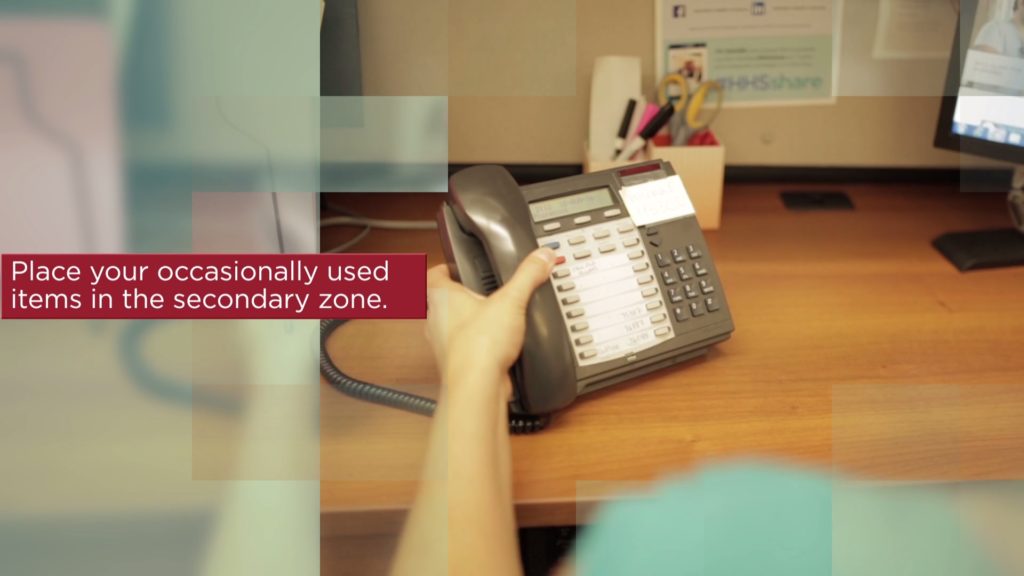
How to organize an ergonomic workspace
Many of us spend several hours a day at a desk. It may not seem like it at the time but repetitive reaching for items like your phone or stapler can strain your body.
Reorganizing items at your workstation can help to create a comfortable work space. A good way to start is to think about the items that you use in terms of how frequently you use them in a work day.
Follow these quick steps to organize your desk:
• When organizing your workspace, consider the positioning of your work tools: keyboard, mouse, phone, paperwork. By positioning items within various reach zones at your workstation, you can create a comfortable, ergonomic work space.
• The first reach zone is your primary zone. This is the zone which is closest to you where items can be easily accessed with your elbows at your side. Frequently accessed items such as your keyboard and mouse, pens, and phone maybe be located in this zone.
• The next zone is your secondary zone. It starts from the primary zone to an extended arms reach. Occasionally accessed items should be located in this zone and may include your phone, paperwork, and reference documents.
• The last zone is the tertiary zone which is beyond reach with an extended arm. This zone is meant for items that are not accessed on a daily basis, like reference books, files, and storage bins.
• Keep in mind that to access items that are beyond reach while seated, standing may help as it increases your ability to reach. If you store items in an overhead hutch, stand to access these items rather than reaching while seated.
• If you use a file cabinet, hutch, and/or bookshelves to store items, consider arranging frequently accessed and heavier items between knuckle and shoulder height. This is the area where your muscles are able to lift them most easily . Ensure that if using a tall file cabinet or bookshelf, that it is secured to the wall to prevent tipping.
Don’t forget about the items that you may not use on a daily basis. Consider getting rid of them to help declutter your workspace.
Remember: if you store items in an overhead cabinet or bookshelf, stand when you reach to access them. Store frequently accessed and heavy items between mid-thigh knuckle and shoulder height so you can access and lift them easily.
